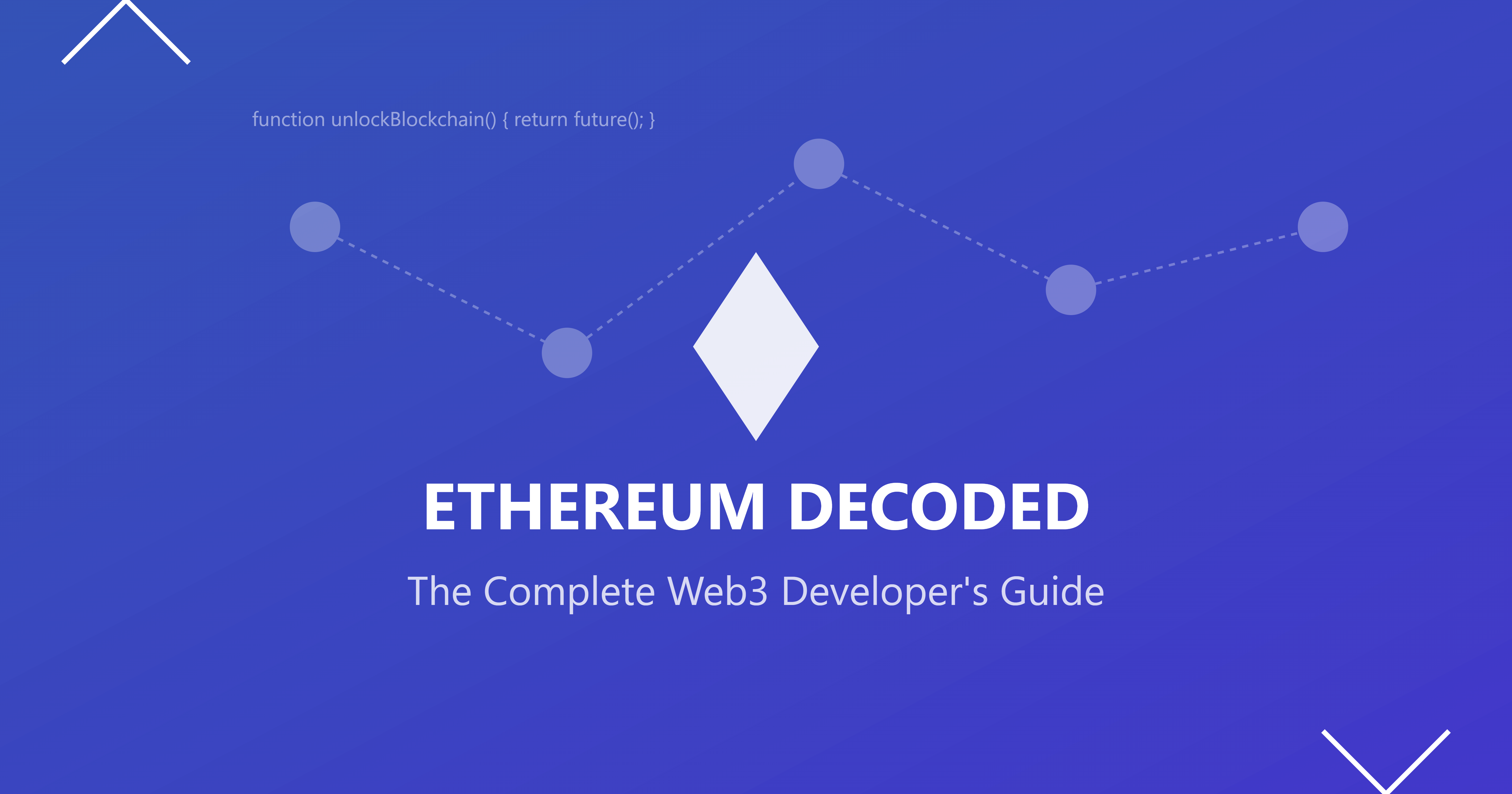Ethereum and Web3 Development: Unlocking the Potential of Decentralized Technology
 Saviour Eking
Saviour EkingTable of contents
- Introduction: The Blockchain Revolution Begins
- The Fundamental Architecture of Ethereum
- Smart Contracts: The Game-Changing Innovation
- The Ethereum Ecosystem: Tokens and Standards
- Consensus Mechanisms: From Proof of Work to Proof of Stake
- Crypto Wallets: Your Gateway to the Blockchain World
- Solidity: The Language of Ethereum Development
- Learning Path for Aspiring Web3 Developers
- Challenges and Opportunities in Web3
- Conclusion: The Decentralized Future Awaits
- Frequently Asked Questions
- Stay Connected

Introduction: The Blockchain Revolution Begins
In the rapidly evolving landscape of digital technology, Ethereum stands as a beacon of innovation, promising to reshape how we understand digital interactions, applications, and economic systems. This comprehensive guide takes you through the intricate world of Ethereum and Web3 development, offering insights that bridge the gap between technical complexity and accessible understanding.
What Makes Ethereum Different?
Unlike Bitcoin, which primarily focuses on transferring a single cryptocurrency, Ethereum represents a quantum leap in blockchain technology. It's not just a currency - it's an entire decentralized computing platform that enables developers to build complex, self-executing applications without central intermediaries.
The Fundamental Architecture of Ethereum
Blockchain Beyond Currency: A Programmable Network
Ethereum introduces the revolutionary concept of a "world computer" - a globally distributed network that can execute complex computational tasks without a central authority. At its core, the platform supports:
Decentralized Applications (dApps)
Smart Contracts
Custom Token Creation
Secure, Transparent Transactions
The Ethereum Virtual Machine (EVM): The Heart of Decentralized Computing
The EVM is a powerful, Turing-complete software that runs on the Ethereum network. It enables developers to write smart contracts in Solidity, a programming language specifically designed for blockchain development.
Smart Contracts: The Game-Changing Innovation
Understanding Smart Contracts
Smart contracts are self-executing computer programs that:
Automatically enforce agreement terms
Operate without human intervention
Ensure transparency and immutability
Reduce the need for intermediaries
Real-World Smart Contract Examples:
Automated insurance payouts
Decentralized voting systems
Supply chain management
Cryptocurrency escrow services
The Ethereum Ecosystem: Tokens and Standards
ERC20 Tokens: The Standard for Digital Assets
ERC20 represents a technical standard for fungible tokens, enabling:
Easy token creation
Standardized implementation
Seamless wallet and exchange integration
NFT Standards: ERC721 and ERC1155
These standards revolutionize digital ownership by:
Creating verifiably unique digital assets
Enabling digital art and collectibles markets
Providing robust ownership verification mechanisms
Consensus Mechanisms: From Proof of Work to Proof of Stake
The Ethereum Merge: A Sustainable Revolution
In September 2022, Ethereum transitioned from Proof of Work (PoW) to Proof of Stake (PoS), a pivotal moment in blockchain history:
PoW Challenges:
High energy consumption
Limited scalability
Centralization of mining power
PoS Advantages:
Significantly reduced energy usage
Enhanced network security
More democratic participation
Improved scalability
Crypto Wallets: Your Gateway to the Blockchain World
Understanding Wallet Components
Public Address
Your public blockchain identifier
Safe to share
Receives funds and interactions
Private Keys
Your secret access mechanism
NEVER share with anyone
Provides complete account control
Seed Phrase
Master recovery key
Can regenerate entire wallet
Ultimate backup mechanism
Wallet Security Best Practices
Use separate wallets for development and personal funds
Never store private keys in public repositories
Use hardware wallets for significant assets
Regularly backup seed phrases
Enable two-factor authentication
Solidity: The Language of Ethereum Development
Solidity Overview
Solidity is an object-oriented, statically-typed programming language designed explicitly for implementing smart contracts on the Ethereum blockchain.
Key Features:
Similar to JavaScript
Strong type safety
Supports inheritance
Complex user-defined types
Direct compilation to EVM bytecode
Learning Path for Aspiring Web3 Developers
Recommended Learning Trajectory
Blockchain Fundamentals
Cryptocurrency Basics
Ethereum Architecture
Solidity Programming
Smart Contract Development
dApp Creation
Security Best Practices
Challenges and Opportunities in Web3
Current Landscape
Rapidly evolving technology
High demand for skilled developers
Potential to disrupt multiple industries
Ongoing scalability improvements
Increasing mainstream adoption
Conclusion: The Decentralized Future Awaits
Ethereum and Web3 represent more than a technological trend - they're a paradigm shift in how we conceptualize digital interaction, ownership, and economic systems.
Call to Action
Whether you're a developer, entrepreneur, or technology enthusiast, the world of Web3 offers unprecedented opportunities for innovation and growth.
Frequently Asked Questions
Q: Is Ethereum just another cryptocurrency? A: No, Ethereum is a comprehensive blockchain platform for building decentralized applications and executing smart contracts.
Q: Do I need to be a expert programmer to start with Web3? A: While programming skills help, many resources are available for beginners. Start with foundational courses and gradually build complexity.
Q: Is Web3 development a good career choice? A: Absolutely! The demand for Web3 developers continues to grow, with competitive salaries and exciting innovation opportunities.
Stay Connected
Follow emerging Web3 trends
Join developer communities
Continuously learn and adapt
#Web3 #Ethereum #BlockchainDevelopment #DecentralizedTechnology #CryptoLearning #SmartContracts #SoftwareDevelopment
Subscribe to my newsletter
Read articles from Saviour Eking directly inside your inbox. Subscribe to the newsletter, and don't miss out.
Written by

Saviour Eking
Saviour Eking
Welcome to my blog! I'm Saviour Eking, a passionate developer/learner with a deep love for software engineering/low level programming. Through this platform, I aim to share my knowledge, insights, and experiences to inspire and educate fellow software engineers and IT enthusiasts. With 1 year of experience in software engineering, I have had the privilege of learning firsthand through hard research. My journey has allowed me to build projects and gain expertise in C, Python3, JavaScript. I believe in the power of DRY and SOLID principles and strive to promote hard work, perseverance and understanding through my writing. In my articles, you can expect to find hands-on content, ranging from practical tutorials, in-depth analyses, thought-provoking discussions, and the latest trends in the industry. My goal is to provide valuable information and practical advice to help you study. I'm also a firm believer in the importance of community and collaboration. I encourage you to engage with my articles, share your thoughts, and join the conversation. Let's learn from each other, exchange ideas, and grow together. Thank you for visiting my blog, and I hope you find my content informative, inspiring, and enjoyable. Feel free to reach out to me via https://twitter.com/TheSaviourEking if you have any questions or suggestions. Happy reading!"